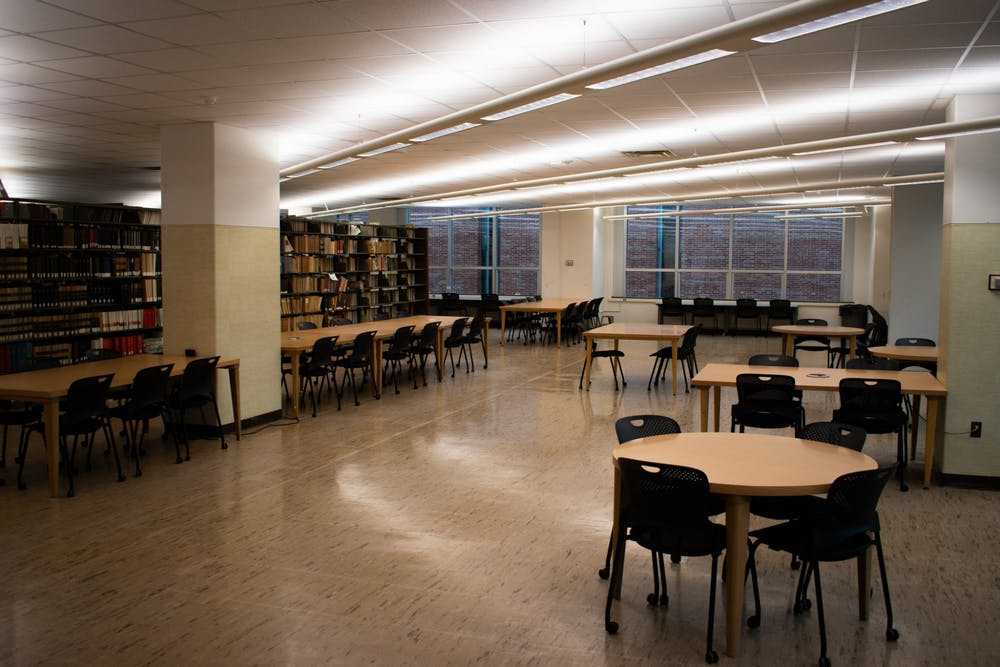How can Illinois schools reconnect with missing students? Text messages, ‘putting on gym shoes’
The five siblings had not been logging on to remote school, so Kari Glenn set out to determine why.
They were among the tens of thousands of Illinois children who lost touch with their schools during the pandemic. Their family phone was disconnected; letters yielded no response.
The school referred the case to Glenn, a regional youth outreach coordinator and truancy officer who works in west suburban Kane County. Glenn knocked on the family’s door, but the family had moved. Four addresses later, she found the family bunked up with a relative. A parent had lost a job; the family needed food.
“School is obviously super important, but my goal is to figure out what we need to put in place for families before we even care about school,” said Glenn. “So we take care of all the barriers first. School is the last thing on parents’ minds when they are trying to survive.”
Glenn said connections to a food distribution program and support from a community group nudged the five siblings back to school — an example of how school districts can reconnect with families amid troubling drops in attendance and even enrollment.
That was the topic of a recent conversation hosted by Chalkbeat Chicago, where educators, experts, and students described what’s working, what’s not, and what they need to help families. (Find the video here.)
Panelists included Glenn, who conducts home visits for three Kane County school districts; Jasmine Thurmond, a principal at Dr. Martin Luther King Jr. Academy of Social Justice on Chicago’s South Side; Ariel Kalil, a University of Chicago professor and behavioral psychologist who co-directs the Behavioral Insights and Parenting Lab; and two high school students, Lux Delagarza of Solorio Academy High School and Brenda Levya of Theodore Roosevelt High School.
The problem is still coming into focus. Illinois reported a larger-than-average enrollment drop this year of nearly 36,000 students — nearly 2% of all public school enrollment. Attendance data is harder to come by, but early data show 1 in 5 Chicago high schoolers did not attend school the first week of fourth quarter in April — not appearing virtually or reporting to school buildings as campuses reopened. And nearly 15,000 elementary parents did not respond to reopening surveys leading up to Chicago’s campus reopening.
Panelists agreed there isn’t a one-size-fits-all way to re-engage families, but some efforts appear promising: home visiting, high-frequency text messaging campaigns to parents, in-person school events, even summer camps. Kalil, the U. of C. researcher, described a pre-pandemic study that showed 20% improvement in chronic absenteeism rates among early learning families after 18 weeks of regular text messaging — messages that included everything from encouraging tidbits, to data on how much school students had missed, to what lessons they missed out on.
Leyva and Delagarza, the students on the panel, underscored the value of personal outreach from trusted teachers and in-person social gatherings, even socially distanced and outdoors. “Sometimes you just feel so small compared to how big your school is,” said Delagarza.
Thurmond, the Chicago principal, argued that educators need to harness the summer: deploying educators and support staff to community fairs, concerts, and parks with fliers to nudge families, and offering parents and students summer opportunities at school. Her school will offer a four-week summer camp with a dual focus: catching up on academics and rebuilding community through play. “The students I serve are often the most vulnerable,” Thurmond said, whose student body is 98% low-income. “So it’s really important that we get them engaged and comfortable with being in the building.”
During the virtual discussion, panelists also described reconnection campaigns that may be showing diminishing returns. Schools and school districts have to do more than email blasts, robocalls, and truancy letters, they agreed — especially considering the frequency of disconnected phone numbers and how many families moved during the pandemic.
After multiple rounds of emails and phone calls failed to reach some families, “we put on our gym shoes and walked the neighborhood,” said Thurmond. “Nothing is more impactful.”
Five- and 10-day truancy letters didn’t do much to convince Delagarza, the Solorio sophomore, to return to remote learning after the weight of the pandemic and isolation became too much and he stopped logging into school. What convinced him: a meeting his mother organized with his teachers.
“They gave me ways to catch up on what I had been missing,” he said. “They (were) understanding and compassionate.”
What became clear during the panel was that schools and districts throughout the state are using different approaches. That presents many advantages — flexibility, tailoring the approach to families and schools — but panelists said more centralized efforts are needed.
This article was originally posted on How can Illinois schools reconnect with missing students? Text messages, ‘putting on gym shoes’


